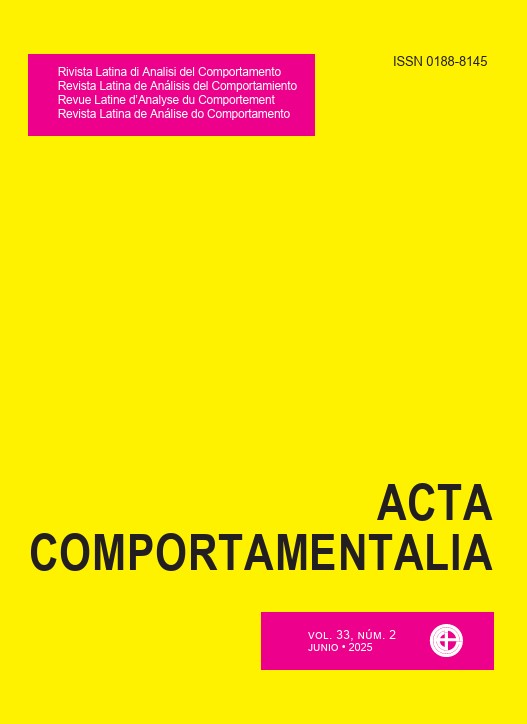Group Behavioral Activation: Adaptation of BATD to Five Sessions and Transdiagnostic Effect
DOI:
https://doi.org/10.32870/ac.v33i1.88584Keywords:
Behavioral Activation, emotional symptomatology, group therapy, BATD, transdiagnosticAbstract
Behavioral Activation (BA) is an empirically supported therapy that stands out for its effectiveness and efficiency for transdiagnostic problems. BA is a contextual treatment oriented to personal values and empirical problem-solving. To improve its efficiency in Colombia, the BATD protocol in group format was adapted to a five-session version (BATD-G5), maintaining all the elements of its original version. Thirteen expert judges evaluated this adaptation in terms of clarity, session load, and fidelity, finding intermediate to good interobserver agreement according to Randolph’s Kappa values ( values between .41 and .79). Additionally, a pilot study was conducted using a single-case AB design with follow-up to evaluate the effect of the BATD-G5 on the emotional symptomatology of four female university students from the city of Pasto, Nariño (Colombia). The participants met the criteria for more than one emotional disorder according to the results of the Mini International Neuropsychiatric Interview M.I.N.I. structured interview during sample recruitment. Additionally, they presented scores of severe and extremely severe levels in depressive, anxiety, and stress emotional symptomatology (assessed by the Depression, Anxiety, and Stress Scales, DASS-21). The results showed a significant decrease in the severity of emotional symptomatology and the severity of anxiety and stress. The results showed a significant decrease in the severity of emotional symptomatology and the frequency of avoidant behaviors, as well as, an increase in healthy behaviors for each of the participants. These findings were supported by visual analyses of the frequency of healthy and avoidant behaviors and the repeated measures of the Tau-U non-overlap test between phases. As clinical contrast measures, the rate of reliable change in the Environmental Reward Observation Scale (EROS) and Behavioral Activation Depression Scale (BADS) scores in each participant were considered. Increases in perceived environmental reinforcement (EROS) and overall behavioral activation level (BADS) were observed. In addition, BA change factors (with the BADS dimensions Activation and Avoidance/Rumination) and affect areas of adjustment (with the BADS dimensions Work/Academic Affect and Social Impairment) were assessed. The administration of the BATD-G5 presented a significant and large magnitude effect on emotional symptomatology (depressive, anxiety, and stress symptoms), the frequency of healthy and avoidant behaviors; as well as, most of the participants met the clinically reliable change in the perception of environmental reinforcement and the level of behavioral activation. Therefore, it can be affirmed that BATD-G5 is a transdiagnostic intervention with a favorable projection for dealing with emotional and affective disorders (including comorbid conditions) due to the characteristics of effectiveness, efficiency, and proven efficacy of BA, and the benefits of group intervention.
Downloads
Downloads
Published
How to Cite
Issue
Section
License

<a rel="license" href="http://creativecommons.org/licenses/by-nc-sa/4.0/"><img alt="Licencia de Creative Commons" style="border-width:0" src="https://i.creativecommons.org/l/by-nc-sa/4.0/88x31.png" /></a><br />Este obra está bajo una <a rel="license" href="http://creativecommons.org/licenses/by-nc-sa/4.0/">licencia de Creative Commons Reconocimiento-NoComercial-CompartirIgual 4.0 Internacional</a>.






